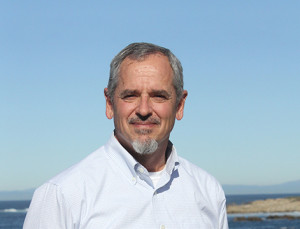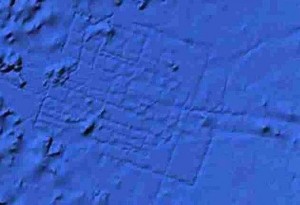Michael Jaye
Feagans, Carl
 Carl Feagans is an American archaeologist and a dedicated sceptic who has occasionally featured in these pages. His most recent offering is a critique of Marco Vigato‘s Empires of Atlantis [1830], which ended his harsh assessment with “Vigato began his book with a conclusion. He tried to support that conclusion with pseudoscientific and fictional accounts he apparently gathered for 15 years.”(a)
Carl Feagans is an American archaeologist and a dedicated sceptic who has occasionally featured in these pages. His most recent offering is a critique of Marco Vigato‘s Empires of Atlantis [1830], which ended his harsh assessment with “Vigato began his book with a conclusion. He tried to support that conclusion with pseudoscientific and fictional accounts he apparently gathered for 15 years.”(a)
>He has also offered a lengthy attack on Michael Jaye‘s Global Flood theory.(b)<
See: Brien Foerster, Fuente Magna Bowl, Spain, Sumerians & Yonaguni
(a) Book Review: Empires of Atlantis – Archaeology Review (ahotcupofjoe.net)
(b) https://ahotcupofjoe.net/2019/11/the-pseudoarchaeology-of-michael-jayes-worldwide-flood/ *
Jaye, Michael *
Michael Jaye is an Associate professor at the Naval Postgraduate School, in Monterey, California. He is a  confirmed catastrophist focused on cometary impacts. In a lecture to the Geological Society of America in 2011(a) he describes two major events in the Earth’s history that had profound effects on the earth and life on it. The first was a double impact 65 million years ago and is generally accepted to have led to the demise of the dinosaurs and the second 460,000 years ago.
confirmed catastrophist focused on cometary impacts. In a lecture to the Geological Society of America in 2011(a) he describes two major events in the Earth’s history that had profound effects on the earth and life on it. The first was a double impact 65 million years ago and is generally accepted to have led to the demise of the dinosaurs and the second 460,000 years ago.
In an April 2015 lecture entitled Resolving the Problem of Atlantis, he expands on his original ideas(b) introducing a third event 13,000 years ago when another cometary impact brought an enormous amount of water to earth, which linked together previously disconnected seas and oceans.
At this point, he introduces Atlantis or more correctly the alleged Google image of Atlantis in the Atlantic Ocean that Jaye now claims was the Plain of Atlantis. As I have previously stated, the image in question shows lines that would have been kilometres in width and could not have been streets and so are also too wide to have been the irrigation ditches described by Plato. The U.S. National Oceanic and Atmospheric Administration has also debunked the silly Atlantis claims generated by these images(e). However, the problem remains, that some people believe what they want to believe not what can be demonstrated.
shows lines that would have been kilometres in width and could not have been streets and so are also too wide to have been the irrigation ditches described by Plato. The U.S. National Oceanic and Atmospheric Administration has also debunked the silly Atlantis claims generated by these images(e). However, the problem remains, that some people believe what they want to believe not what can be demonstrated.
Jaye does not accept the explanation for these anomalous lines given by Google, joining conspiracy theorists in the process. I personally think that he should stick to geology and leave the subject of Atlantis to others.
Jaye has also given me a link(c) to a video of one of his lectures. In it, one of his claims is that most of the Earth’s water is the result of a collision with an icy comet around 12,800 years ago. However, the widespread distribution of fossil fish far exceeds the areas occupied by original unconnected bodies of water suggested by Jaye. This is just one of many inaccuracies offered by him. His ideas can be read on Graham Hancock’s website(d) and in his slender 2017 66-page book, The Worldwide Flood [1549].
Jaye has failed to explain how his claim of a relatively recent acquisition by the Earth of most of its water, can account for the recurring Ice Ages that our planet has endured over many millions of years. Ice Age theory is well established, but according to him, the Earth would not have had enough water over that timespan to produce the glaciers that enveloped large areas of the globe, sometimes to a depth of 3 or 4 km, leading to the measurable isostatic rebound we still experience today. Where I’m sitting right now had a glacier of around a kilometre thick over it during the last Ice Age!
Jaye also published a paper entitled Mu and the Worldwide Flood, in which he found some support for the late Flood theory.(g)
Carl Feagans, an ardent sceptic, has published a lengthy refutation of Jaye’s theories, in particular his idea of a global flood.(f)
(b) The Explorers Club – Events – NYC – Public Lecture Series feat. Michael Jaye (archive.org)
(c) https://vimeo.com/126026401
(d) https://grahamhancock.com/jayem2/
(e) https://oceanservice.noaa.gov/facts/atlantis.html
(f) https://ahotcupofjoe.net/2019/11/the-pseudoarchaeology-of-michael-jayes-worldwide-flood/
(g) Mu and the Worldwide Flood | My-Mu.com Guest Blog (archive.org) *
Underwater Anomalies *
Underwater Anomalies claimed as Atlantis related have been ‘identified’ in recent years on various Google Earth  images. The one that received the most widespread attention was situated in the Atlantic west of the Canaries. Bernie Bamford, a British aeronautical engineer, got widespread media coverage in 2009 with this ‘new’ discovery. However, it is claimed that these features were discovered even earlier by Larkin & Cynthia Jones(h).
images. The one that received the most widespread attention was situated in the Atlantic west of the Canaries. Bernie Bamford, a British aeronautical engineer, got widespread media coverage in 2009 with this ‘new’ discovery. However, it is claimed that these features were discovered even earlier by Larkin & Cynthia Jones(h).
The location in question purports to show a gridlike street system. However, the scale involved would suggest ‘streets’ half a mile wide, which even for Atlanteans would have been rather unlikely. Google updated its data with a technical explanation for the anomaly(b)(k). However, Michael Jaye is unwilling to accept Google’s response and has described the gridlike feature to have been the Plain of Atlantis(f). A comparable site(c) near Puerto Rico has been highlighted by Deb Johnson, which can probably be explained similarly.
Bernhard Beier wrote an extensive article for Atlantisforschung on the evolution of the controversy surrounding Bamford’s claim and concluded with “In this case, the Atlantis reference was created solely by the media, which acted completely independently of competence – and thus created another, small ‘Atlantis myth’ in the world.”(j)
A slightly different type of image has been spotted in lakes in the Peruvian Andes(d) as well as Manzanillo Bay in the Dominican Republic(e). These images of shallower waters show a range of rectangular shapes that stop dead where they meet the shore with no continuation on land. Once again I suspect flawed processing of the scanning data.
Apart from the fact that all of the above lack any of the circular features so vividly described by Plato. It is obvious that they cannot all be Atlantis and in all probability none are. No effort has been made to match any of these anomalous images with the topographical details provided by Plato!
May 2022 saw more nonsense of this ilk in the tabloids, with headlines proclaiming the discovery of a ‘Yellow Brick Road to Atlantis’, north of Hawaii in the Pacific. In fact, the ‘road’ is a recognised volcanic feature and has never been claimed as anything else by its discoverers(i).
In a similar manner, it was reported in 2011 that divers on the coast of the Greek island of Zakynthos initially thought that they had discovered the remains of a lost port city, when they found “some very unusual underwater formations came into view, including some strange pillars, walkways and even what appeared to be courtyards. Writing in the journal Marine and Petroleum Geology, a team of environmental researchers has now revealed that these peculiar structures are not actually archaeological remains at all.
After being carefully examined by archaeologists, geologists and professional divers from both Greece and the United Kingdom, it was clear that the disk and doughnut-shaped columnar features were a type of mineralization feature. They were being generated by the escape of chemicals, mainly methane, emerging from hydrocarbon-rich layers hiding below a semi-ruptured fault.
Microbes lurking in the sediment there appeared to be using the carbon in the methane as a source of energy. As they oxidized the methane, these bacteria and archaea were inadvertently changing the chemistry of the sediment they were living in to form a natural cement. To geologists, this is known as ‘concretion,’ and it can result in a number of new rock formations.” (l)
(b) https://www.livescience.com/18308-google-earth-update-erases-atlantis.html
(c) https://www.atlantismystery.com/Atlantis.jpg (offline)
(d) https://www.bibliotecapleyades.net/sociopolitica/esp_sociopol_underground23.htm
(e) https://manzanillodigital.blogspot.com/2009/12/lo-que-dice-fianchy-torres-sobre.html
(f) The Explorers Club – Events – NYC – Public Lecture Series feat. Michael Jaye (archive.org)
(g) https://skeptico.blogs.com/skeptico/2009/02/atlantis-not-found-with-google-earth.html
(h) Atlantis – Just Another Sea Floor Anomaly? – YouTube
(k) Atlantis revealed at last… or just a load of old Googles? | Daily Mail Online
(l) https://www.iflscience.com/submerged-greek-lost-city-sculpted-microbial-life-36128
